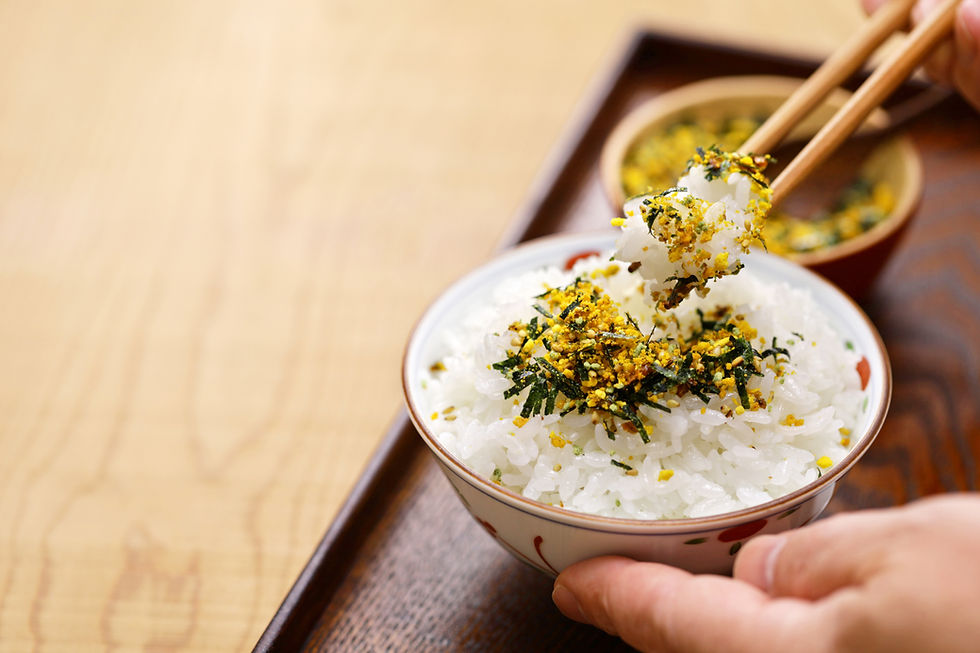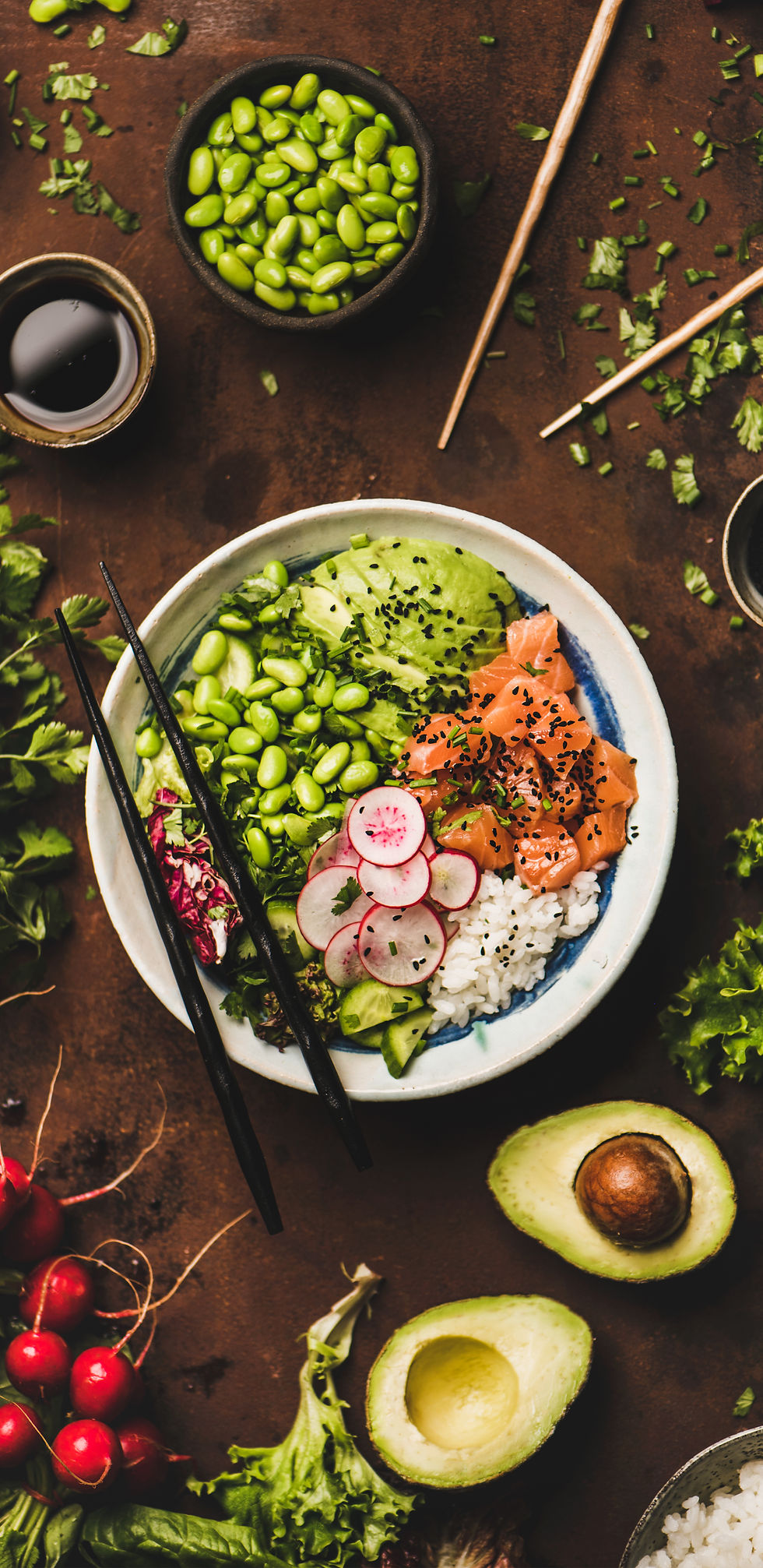September Spice Club: Furikake
- Caroline Shaltz Toplanaj
- Sep 1, 2025
- 2 min read
Updated: Sep 25, 2025

September’s spice is furikake (振り掛け), so this month we are traveling to Japan and Hawaii! Furikake is a Japanese seasoning typically served over rice. Blends of furikake vary, but the most common ingredients include nori (dried seaweed), black and/or white sesame seeds, pickled red shiso leaf, and fish flakes. Other mix-ins include salmon, wasabi, or MSG. There are also vegan and vegetarian mixes available.

How is it Used? Furikake and rice are best friends! It is the perfect topping for a plain bowl of rice, but don’t stop there - try sprinkling it on veggies, fish, avocado toast, eggs, ramen, and even popcorn.
The History of Furikake dates back to 13th century Japan when mixes containing dried fish and salt served were over rice. Regions near the coast would make unique mixes using local ingredients.

Gohan no Tomo (“A Friend for Rice”) claims to be the first modern brand of furikake. It was developed by a Japanese pharmacist in the Taisho Period (1910-1926) and was marketed as a health supplement. It contained ground fish bones and sesame seeds, which are high in calcium. The Japanese Army was even given furikake during World War I. Gohan no tomo is still available for purchase, although it now contains dried fish flakes rather than fish bones.
After World War II many companies began manufacturing furikake blends to combat malnutrition, and it gained popularity as both a source of vitamins and as a seasoning. Japan even has a National Furikake Association!
Recipes. The recipes this month are starting points and can be easily adapted for vegetarians or vegans. Take the basics of each recipe, add your favorite ingredients, and make it your own!

Onigiri are balls of white rice wrapped with seaweed. They are typically shaped into triangles, balls, or cylinders. Because of their easy shape and seaweed wrapper, origiri are commonly sold in convenience stores in Japan. Popular fillings include tuna and mayo, salmon, pickled plum, dried bonito flakes, or seaweed. I like to add freshly chopped cucumber or pickled daikon radish to mine. Learn more about onigiri and how to make them here.

Poke (pronounced POH-kay) is a traditional Hawaiian dish. The word poke means “to slice” or “cut crosswise into pieces.” It is believed that the first poke dishes were a result of people snacking on the raw cut-offs from fishing catches. Historically, poke was seasoned with sea salt, inamona (kukui nut), and sometimes blood from the gills. It was usually served with edible underwater plants.
Today, poke usually comes in the form of a bowl, which consists of raw fish and vegetables served over rice.
The first instance of Japanese people reaching Hawai’i was in 1868, and since then, through immigration and tourism, the relationship between the Japanese and Hawaiian people - and their food - has grown. It is very common to find onigiri in Hawaiian 7-Elevens and furikake on poke bowls.
Use this recipe as a starting point. What will you choose to put on your poke bowl?
Today’s blog post was written by Caroline Shaltz Toplanaj, librarian at RHPL.



